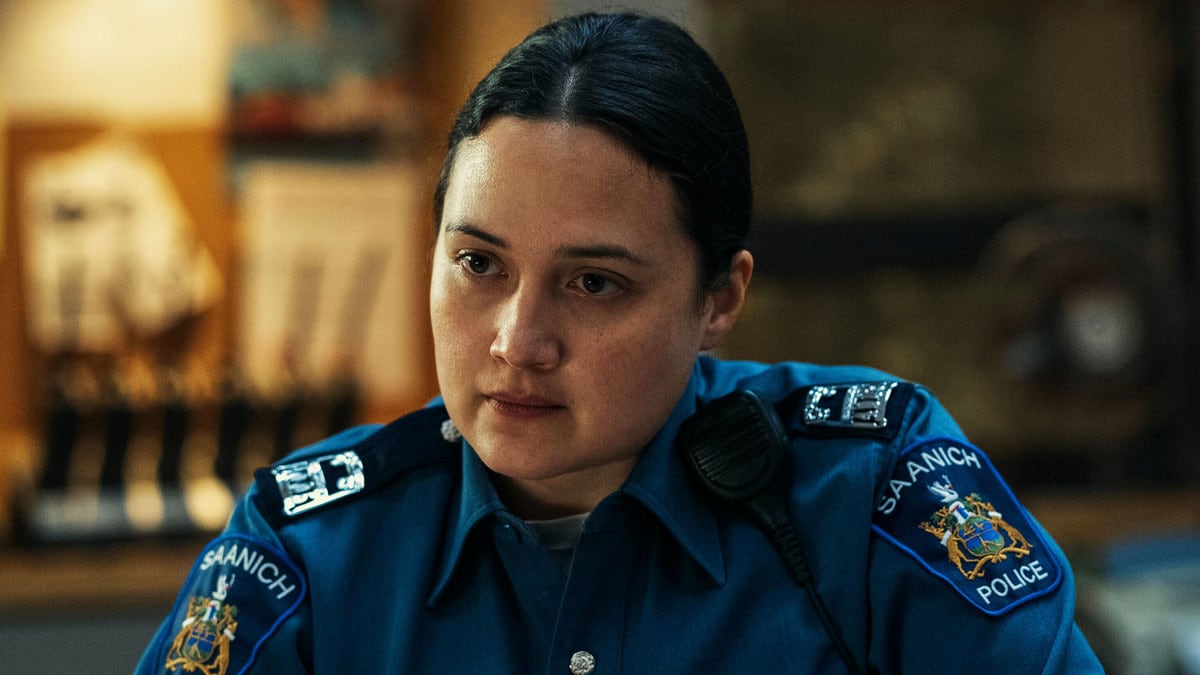Teenagers are horrific—that much, we know. They’re a tornado of hormones, pheromones, acne, adolescence, mood swings, and frankly, bad taste. But, at least most of the time, teens are pretty harmless; most of the ones that I’ve met are too busy scrolling TikTok with the volume on its highest setting to be concerned with the matters of popularity and superficial beauty that preoccupied young people 20 years ago. (Unless you don’t have a different color Stanley cup for every day of the school week, in which case, you’re basically a microorganism in the eyes of the average teen.)
But things were different in 1997. Popularity was defined by who had the new Biggie CD and whose parents had the most money. Growing up in the ’90s was brutal, and that all-consuming—and all-too-familiar—ferocity is on vivid display in Under the Bridge, Hulu’s new limited series premiering April 17. The show, based on author Rebecca Godfrey’s 2005 book retelling of the events, dramatizes the real story of a brutal crime that happened in the fall of 1997, one that captivated a sleepy Canadian province and ignited a firestorm of media attention that was laser-focused on the adolescents at the center of it all. And though its two adult lead actors, Riley Keough and Oscar nominee Lily Gladstone, are certainly compelling as the two adult women wrapped up in the investigation, it’s the teen actors who run away with the series. They give the show an unnerving, deeply gut-wrenching sense of volatility and violence, one which makes Under the Bridge almost impossible to look away from.

Rebecca (Riley Keough)
Darko Sikman / HuluIn November 1997, the body of 14-year-old Reena Virk (played in the show by Vritika Gupta) was found on the shore of Gorge Inlet in Saanich, British Columbia. The chaos that followed was unlike anything that the population of the greater area of Victoria, British Columbia had ever seen before. “The story would haunt the island for years to come,” Rebecca Godfrey (Keough) says in a voiceover in the opening moments of the premiere. “It forever changed a fact that once seemed so immutable, so fundamental: Young girls in Victoria we were supposed to protect, not be protected from.” This sentiment initially feels melodramatic and paranoid, perhaps even a bit prosaic. But that seems intentional, given that it reflects how Godfrey writes the firsthand accounts in her book, in which Godfrey details her time visiting Victoria as an adult. She returned to the city, where she grew up, to write a book reminiscing on its singular youth culture. Little did Godfrey know that she would be stumbling into a harrowing crime, already in progress.
Under the Bridge alters some of the names involved in Reena’s murder as well as some of the story to make it more of a dramatic adaptation. While some might find these modifications objectionable—particularly given that Virk’s murder spawned national moral panic in Canada, leading to an excess of reporting on bullying and aggression among teenage girls—they ultimately aid the show’s larger thematic framework. Even if bullying might not be as pervasive of a conversation as it was even a decade ago, any high school student will be able to point you in the direction of the source of their student body’s cruelty. This is just how teenagers are. They are not all upstanding pictures of stalwart morality. Sometimes, kids are inhumanely vicious.
The series soars when it digs into the disquieting nuances of this kind of teenage wickedness. Alternating between two timelines—before and after Reena’s murder—we follow three of Reena’s attackers: Josephine Bell (Chloe Guidry) and her two underlings, Dusty (Aiyana Goodfellow) and Kelly (Izzy G.). All three of them met at Seven Oaks, a local foster home for young girls, which Kelly has since moved out of after rectifying her relationship with her family. For Josephine and Dusty, however, things are not that simple. To cope with their trauma, they wear misplaced aggression on their sleeves. Acting tough, being violent, and challenging authority get them what they want. They use the fear that their behavior conjures as currency; it’s their cultural cache to take them further into Victoria’s underbelly of tainted youth and lost innocence.

Josephine (Chloe Guidry) and Dusty (Aiyana Goodfellow)
Darko Sikman / HuluSomeone who knows all about that hidden world—or, at least, who thinks she does—is Cam Bentland (Gladstone), a local police officer who followed in her father’s footsteps and joined the force after high school. Cam is intimately familiar with how Victoria’s youth operates, having spent some time at Seven Oaks in her teenage years. Now, Cam has swung in the other direction, working as a member of the state-sponsored forces that once controlled her life. Watching her character overcompensate for her troubled youth while reckoning with an increasing distrust of the local police force is a fascinating tightrope act. What’s more, Cam has a history with Rebecca, and their mutual involvement with Reena’s murder creates an intriguing, if occasionally manufactured, dynamic between the show’s two leads.
Keough is wiry and unpredictable as she tries to navigate the dark temptations of that relationship, while Gladstone is just as stoic and powerful as she was in last fall’s Killers of the Flower Moon. Though Godfrey wrote the initial Under the Bridge, her character occasionally takes a narrative backseat, especially as she wades deeper into the lives of the teenagers she’s studying. The series makes an effort to keep its adult characters present while actively centering both Reena and Josephine, affirming that this is very much a story of their mutually tragic and disturbing lives. Gupta is especially heartbreaking as Reena, whose life is filled with crushing uncertainty and teenage volatility. As one of the only Indian kids in her school, whose family is deeply religious, Reena is the subject of relentless and intense bullying. That’s only compounded by the pressure to fit in among Josephine and her pack of lackeys, who call themselves the CMC (“Crip Mafia Cartel”). Watching her story unfold feels like staring down a black well of doom: If you peer too far over the edge, there is no way out.
But it’s Guidry’s Josephine who steals the show here, even away from veteran powerhouses like Gladstone and Keough. Her performance is both shockingly realized and completely recognizable; Josephine has the unmistakable essence of every troubled teenager I went to high school with, who broadcasts their mistakes as lawless wins. Guidry’s distressing performance is totally beyond her years. She sizes up every single situation, and her interaction is studied, calculated, and executed with astonishing precision. In all of my years watching teenagers behaving badly on television, no one has struck fear in my heart the way Guidry does in Under the Bridge.

Cam (Lily Gladstone)
Darko Sikman / HuluBut it’s not only that she can command the screen of someone twice her age, or convey the presence of an adolescent tormentor so acutely. Guidry’s performance also represents the innate knowledge of someone who has been so torn asunder by life—at such a young age and with no real guidance—that there is no way out other than imitating the merciless violence that she knows. Thankfully, Guidry is so talented that she makes this feeling perceptible without trying to make Josephine sympathetic. Whether this person, who partook in horrific crimes, deserves any compassion at all is a choice left up to the individual viewer. What’s important is that the question remains at the forefront of the audience’s minds throughout the show, and that Guidry is such a talented young actor that the answer is never entirely clear.
Under the Bridge boldly asks audiences to consider a broad picture of evil, one that’s filled with completely different perspectives. As haunting as that often is, and as massive of a pit as it will leave in your stomach, it’s an untraditional approach to a true crime story that encourages radical care and love. Perhaps if there were more of that in the world, despondent stories like this wouldn’t need to be told.






